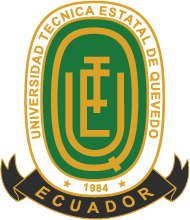Chemical composition and degradation four species of Pennisetum sp
DOI:
https://doi.org/10.18779/cyt.v8i2.151Keywords:
ELEPHANT, GRASS KINGS, PURPLE, MARALFALFA, CLONE CUBA CT-115, AGE CUTOFF, IN SITU DEGRADATION.Abstract
The capacity to degradation of pastures cut on the coast, is an alternative to the demand of grasses for feeding ruminants. four species of grass Pennisetum (elephant, purple, king grass, maralfalfa and clone Cuba CT-115) at three cutting ages (30, 45 and 60 days) were selected and the degradative dynamics in 0, 3, 6, 12 ,24, 48 and 72 hours of incubation was evaluated, using three fistulated Brahman bulls 450 kg average. The technique of nylon bags was used and a randomized block design was used with a 4x3 factorial arrangement (forage species x age cutoff). Data were subject to an analysis of variance with Tukey test (p<0.05) and statistical software (SAS, 2003). It was found that increasing age was associated with decreased protein, best proportions was 30 days with 12.89%, followed by 12.19, 11.53 and 9.77% for maralfalfa, CT-115, king grass and elephant, respectively. The highest rate of degradation was p≤0.001 in situ for 30 days maralfalfa cutting, obtaining dry matter (88.85%), organic matter (89.53%) and ash bioavailability (85.24%) after 72 hours incubation. The release of these components was influenced by forage maturity, thus its high degradation ensuring an amount of fermentable energy available to the rumen microbial synthesis process and it is a good alternative of use for livestock.
Downloads
Downloads
Published
How to Cite
Issue
Section
License

This work is licensed under a Creative Commons Attribution-NonCommercial-ShareAlike 4.0 International License.
Licensing Agreement
This journal provides free access to its content through its website following the principle that making research available free of charge to the public supports a larger exchange of global knowledge.
Web content of the journal is distributed under a Attribution-NonCommercial-ShareAlike 4.0 International.
Authors may adopt other non-exclusive license agreements for the distribution of the version of the published work, provided that the initial publication in this journal is indicated. Authors are allowed and recommended to disseminate their work through the internet before and during the submission process, which can produce interesting exchanges and increase citations of the published work.












